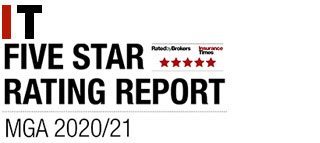UK insurers are getting better at controlling the insurance cycle, says Raj Ahuja of EMB
Over recent months there has been a series of contradictory statements about the insurance cycle. In the blue corner are those who would have us believe the cycle is a thing of the past (risk carriers). In the red corner are those who predict an outbreak of another price war (mostly analysts and intermediaries).
As so often in these circumstances, the truth lies somewhere in the middle.
There is no sign of any end to the insurance cycle. Indeed, it is difficult to see how this could ever happen in a free market without changing human behaviour.
When people make money out of an economic activity it is only natural for others to want to join in, so increasing supply and depressing prices. When they lose money, they get out with the opposite effect.
The good news for insurers and reinsurers, as we approach another dip in the cycle, is that it is unlikely to be as uncontrolled this time as in the past.
Since it is fashionable to chastise the insurance industry for its perceived failures, we should also acknowledge its successes. In most respects underwriters and senior management have become more professional, more technical and more disciplined. As a result, they are better placed to prevent the kind of nose-dive that has wrecked balance sheets in the past.
Right now, motor is pointing downwards, but not in the dramatic way that some have predicted. Although liability classes have generally reached a plateau, circumstances vary and it is difficult to generalise. For example some types of employers' liability policy have maintained and added to their spectacular increases of recent years.
Overall, rates are becoming slightly softer in the domestic market and deductibles, where applied, seem to be holding up.
But just how far will conditions deteriorate and with what effect? EMB's market intelligence indicates that, although insurance remains an extremely competitive and complex way to make money, well-managed companies that pay due attention to the downside of their businesses should come through intact.
What are the grounds for such relative optimism? Putting it simply, insurers now have the expertise, methodologies and software to understand the consequences of their actions and, more than ever before, the will to maintain rates. The barriers to entry are also greater than they used to be, making a flood of new capital less likely.
Technical knowledge
Looking first at the technical aspects, personal lines insurers have learnt to exploit the wealth of information at their disposal. With increased computer power and ever-improving software, insurers are now able to store, retrieve and then use data to arrive at accurate pricing and reserving levels.
Commercial lines insurers started down this track around five years ago and, although they initially found many dead ends, they are now starting to have more confidence in their own data and the parameters driving the underwriting models.
This hard work is now repaying the investment for personal lines insurers too. Yes, they may still underwrite at a loss to gain or retain market share, but on the whole they know why they are doing it.
In the past underwriters, unaware of the implications of their actions, have tended to chase prices down in a soft market.
The marine market provides a good example of this. In 1994, when rates began to soften, the market went into freefall with rates plummeting to almost half of what they were at the top of the cycle.
Thise should be contrasted with the performance of UK motor underwriters (see table above). When motor rates began to soften in the early 1990s, they responded more quickly than the marine underwriters. They knew they were writing at a loss and corrected their pricing accordingly.
It would only be fair to add that marine underwriters in London have less data at their disposal and have since made great efforts to improve their methodologies.
Insurers are known for talking tough on pricing only to capitulate at the first whiff of competition. This time, though, they mean it. Capital-consuming lines of business are being turned around or dissolved - and there are several reasons for this new-found rigour.
Cash flow underwriting
Most people are familiar with the argument that investment conditions can no longer compensate for cash flow underwriting.
To this I would add two factors: a tougher stance by the reinsurance market and the arrival of risk-based regulation with its use of financial models to assess capital adequacy. In the newly-emerging world of FSA regulation there is nowhere to hide bad underwriting.
Another factor that is often overlooked is the ownership of the non-Lloyd's UK insurance industry. A growing proportion of the market is now controlled by banks and others for whom insurance is not the main activity.
The demands they make on their capital rule out any return to suicidal underwriting; their overriding objective is to make a profit, and they have the size and leverage to steady the market in difficult times.
Critical mass
Let's not forget that the insurance market is much more challenging for newcomers.
Esure may have made big inroads, but few entrants have such determination and backing. In today's market, although established companies may be able to stay small and profitable, new insurers need considerable critical mass to achieve the spread of risk and economies of scale to be viable.
Again, the demands of the FSA act as a significant deterrent to under-resourced, opportunist capital.
Lloyd's, too, is making unprecedented demands on potential new entrants via the new franchise regime.
Finally, any insurer that is still considering an aggressive underwriting policy must contend with the reinsurance industry. Reinsurers have lost too much money for too long and, post 9/11, they are digging in their heels.
Specifically, they are applying experience and exposure rating before quoting terms and conditions, using return-on-capital pricing techniques and proactively monitoring price adequacy.
They are increasingly adopting matrix underwriting techniques to provide peer review of underwriting decisions and are supported by better data to monitor aggregates.
In short, they have both the will and the technical means to restrain overenthusiastic cedants. Gone are the days when reinsurers would support irresponsible insurance underwriters.
None of this makes it easy for insurers to make profits especially when conditions become soft. It remains notoriously difficult to make sustainable profits and adequate returns on capital in classes such as employers' liability, public liability and professional indemnity.
Nonetheless the current outlook for the insurance industry is more stable than I can ever recall - at least by its own volatile standards.
Hosted by comedian and actor Tom Allen, 34 Gold, 23 Silver and 22 Bronze awards were handed out across an amazing 34 categories recognising brilliance and innovation right across the breadth of UK general insurance.









